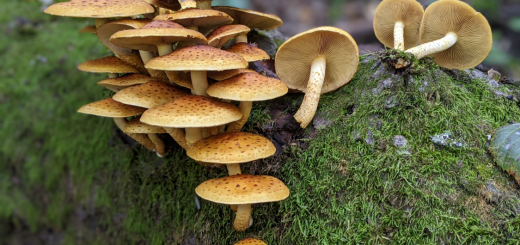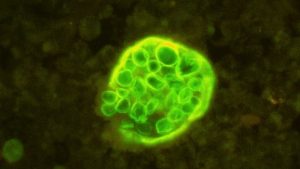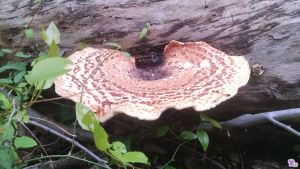#016: Characteristics of the Defunct Phylum Zygomycota
It has recently been demonstrated that the four subphyla historically classified as zygomycota do not make up a monophyletic group. As a result, the phylum zygomycota is no longer used. However, it has not yet been replaced by other phyla. The terms “zygomycota” and “zygomycetes” are therefore only used informally to reference this diverse group of fungi. The distinctive characteristic of the zygomycetes is their method of sexual reproduction (if a sexual stage exists). Their hyphae are almost always haploid. When two compatible (and haploid) hyphae meet they form gametangia, which fuse and become diploid. However, the diploid hypha is immediately isolated from the rest of the fungus. This isolated hypha then undergoes meiosis and develops into one zygospore. The zygospore is usually thick-walled and undergoes an obligatory period of dormancy before it germinates. This helps the spore survive for a long time in adverse conditions. Zygos also tend to lack septa, with the exception of a few families and in older or damaged hyphae.
Unsurprisingly, the zygomycota are an extremely diverse group. You are most familiar with them as the fast-growing mold you find on old fruit, but in addition to bring saprobic (in soil, on fruit, on dung, etc.) there are species that are: parasitic on plants, on amoebas, on insects and other animals, and even on mushrooms or other fungi; mutualistic with plant roots; and harmless symbionts in animals’ guts. Their methods of asexual reproduction are also very diverse. The fungi growing on your lettuce tend to produce pin-shaped sporangia that release wind-dispersed sporangiospores. Other fungi such as the dying-decomposing Pilobolus species have adapted their sporangiophores (the stalks that support the sporangia) to be light-sensitive spore cannons. A liquid-filled vesicle underneath the sporangium acts as a lens and focuses light onto the supporting hypha, allowing it to direct its growth toward the sun. When it is mature the vesicle bursts and launches the sporangium. Angling toward the sun allows it to shoot its spores up to several meters away from the dung. Other fungi use variants of sporangia. Some produce sporangiola, which are sporangia that only contain 1 to 30 spores. To make up for the small numbers, some species place their sporangiola at the tips of a branching sporangiophore. Another variation is the merosporangium. This has strings of spores that arise from a central vesicle. Species that form merosporangia are polyphyletic, so this trait has apparently arisen multiple times within the zygomycetes. A final type of asexual spore is the trichospore. This a one-spored sporangiolum produces unique spores with basal filaments that aid in attaching to new substrates. Trichospores are only formed by fungi in the order Harpellales, which live harmlessly in the guts of both terrestrial and aquatic arthropods.
See Further:
http://www.mycolog.com/CHAP3b.htm (taxonomy is dated)
http://books.google.com/books?id=Wcquo0lzmSgC&pg=PA6&lpg=PA6&ots=Gxk-01oian&focus=viewport&dq=zygomycota+subphyla&output=html_text (this is a good overview of the recent changes to zygomycota)








![#011: Characteristics of Kingdom Fungi [Archived]](https://www.fungusfactfriday.com/wp-content/themes/hueman/assets/front/img/thumb-small-empty.png)


